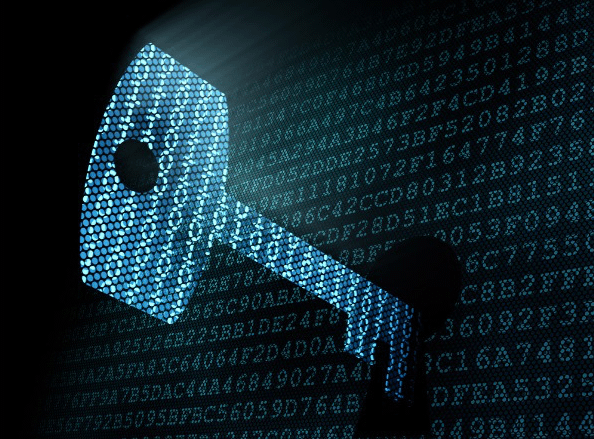IASME Cyber Essentials - Configuration Controls
As cyber threats continue to evolve, it's crucial for organizations to prioritize their cybersecurity posture. One effective approach is obtaining the IASME Cyber Essentials certification. In this blog post, we'll delve into the significance of configuration controls within the IASME Cyber Essentials framework.
By implementing robust configuration controls, organizations can fortify their defences and protect against various cyber risks.
1. Understanding Configuration Controls: Configuration controls involve establishing and maintaining secure configurations for hardware, software, and network systems within an organization. These controls play a vital role in minimising vulnerabilities and limiting potential attack vectors.
2. Secure Baseline Configuration: A fundamental aspect of configuration controls is defining a secure baseline configuration for all devices and systems. This involves establishing standardized settings, removing unnecessary services, and disabling default accounts or passwords. Implementing a secure baseline configuration ensures consistency and helps reduce the attack surface.
3. Patch Management: Effective patch management is a critical configuration control. Regularly applying security patches and updates to operating systems, applications, and firmware helps address known vulnerabilities. Organisations should establish a patch management process that includes testing, deployment, and monitoring to ensure systems remain up to date and protected.
4. Secure Network Configuration: Network security is a key area for configuration controls. Organizations should enforce secure network configurations, such as strong firewall rules, proper segmentation, and restrictive access controls. Regular network audits and continuous monitoring can help identify and rectify any misconfigurations that may lead to security gaps.
5. Secure Device Configuration: Configuration controls extend to individual devices within an organization. Implementing secure device configurations involves practices like strong password policies, disabling unnecessary services or ports, and implementing encryption protocols. Robust device configuration ensures that each endpoint is adequately protected.
6. Change Management: Change management processes are crucial for maintaining secure configurations over time. Organisations should establish well-defined change management procedures that involve assessing the security impact of proposed changes, testing and approval processes, and documentation of changes made. This helps prevent unintended consequences that may introduce vulnerabilities.
7. Continuous Monitoring: Configuration controls are not a one-time implementation; they require continuous monitoring and assessment. Regular audits, vulnerability scans, and log analysis can help detect and address configuration drift, unauthorised changes, or potential weaknesses.
Monitoring allows organizations to maintain a strong security posture and respond promptly to any deviations.
Conclusion: Configuration controls are an indispensable element of the IASME Cyber Essentials certification framework.
By focusing on secure configurations across hardware, software, and networks, organizations can significantly enhance their cybersecurity defences.
Implementing a robust configuration control strategy, including secure baseline configurations, patch management, network and device security, and change management processes, enables organisations to proactively mitigate cyber risks and protect their valuable assets.
Remember, obtaining the IASME Cyber Essentials certification not only helps bolster your security posture but also demonstrates your commitment to cybersecurity best practices to clients, partners, and stakeholders. Invest in configuration controls and fortify your organisation's defences against evolving cyber threats
Buy your Cyber Essentials Certification application here!
By implementing robust configuration controls, organizations can fortify their defences and protect against various cyber risks.
1. Understanding Configuration Controls: Configuration controls involve establishing and maintaining secure configurations for hardware, software, and network systems within an organization. These controls play a vital role in minimising vulnerabilities and limiting potential attack vectors.
2. Secure Baseline Configuration: A fundamental aspect of configuration controls is defining a secure baseline configuration for all devices and systems. This involves establishing standardized settings, removing unnecessary services, and disabling default accounts or passwords. Implementing a secure baseline configuration ensures consistency and helps reduce the attack surface.
3. Patch Management: Effective patch management is a critical configuration control. Regularly applying security patches and updates to operating systems, applications, and firmware helps address known vulnerabilities. Organisations should establish a patch management process that includes testing, deployment, and monitoring to ensure systems remain up to date and protected.
4. Secure Network Configuration: Network security is a key area for configuration controls. Organizations should enforce secure network configurations, such as strong firewall rules, proper segmentation, and restrictive access controls. Regular network audits and continuous monitoring can help identify and rectify any misconfigurations that may lead to security gaps.
5. Secure Device Configuration: Configuration controls extend to individual devices within an organization. Implementing secure device configurations involves practices like strong password policies, disabling unnecessary services or ports, and implementing encryption protocols. Robust device configuration ensures that each endpoint is adequately protected.
6. Change Management: Change management processes are crucial for maintaining secure configurations over time. Organisations should establish well-defined change management procedures that involve assessing the security impact of proposed changes, testing and approval processes, and documentation of changes made. This helps prevent unintended consequences that may introduce vulnerabilities.
7. Continuous Monitoring: Configuration controls are not a one-time implementation; they require continuous monitoring and assessment. Regular audits, vulnerability scans, and log analysis can help detect and address configuration drift, unauthorised changes, or potential weaknesses.
Monitoring allows organizations to maintain a strong security posture and respond promptly to any deviations.
Conclusion: Configuration controls are an indispensable element of the IASME Cyber Essentials certification framework.
By focusing on secure configurations across hardware, software, and networks, organizations can significantly enhance their cybersecurity defences.
Implementing a robust configuration control strategy, including secure baseline configurations, patch management, network and device security, and change management processes, enables organisations to proactively mitigate cyber risks and protect their valuable assets.
Remember, obtaining the IASME Cyber Essentials certification not only helps bolster your security posture but also demonstrates your commitment to cybersecurity best practices to clients, partners, and stakeholders. Invest in configuration controls and fortify your organisation's defences against evolving cyber threats
Buy your Cyber Essentials Certification application here!

